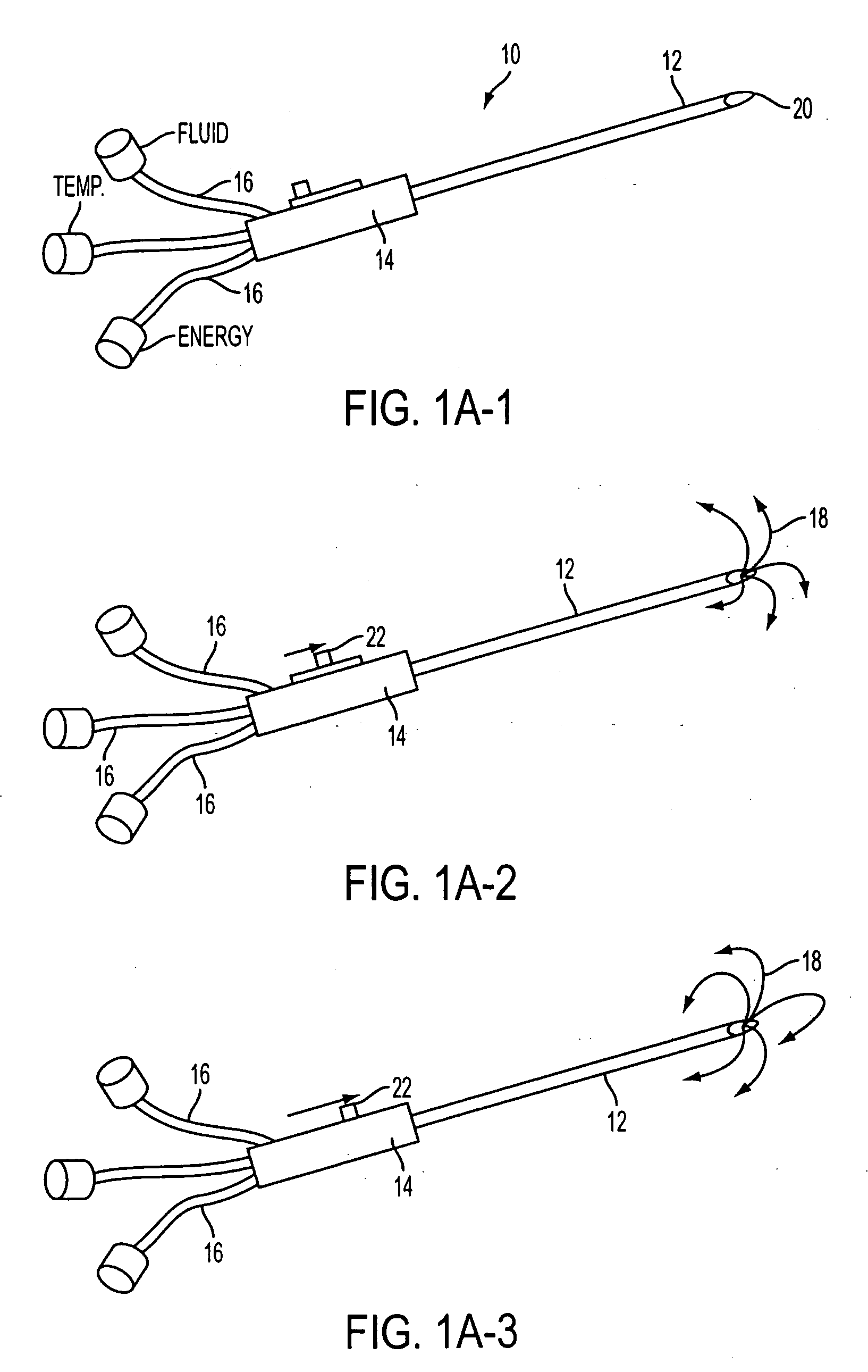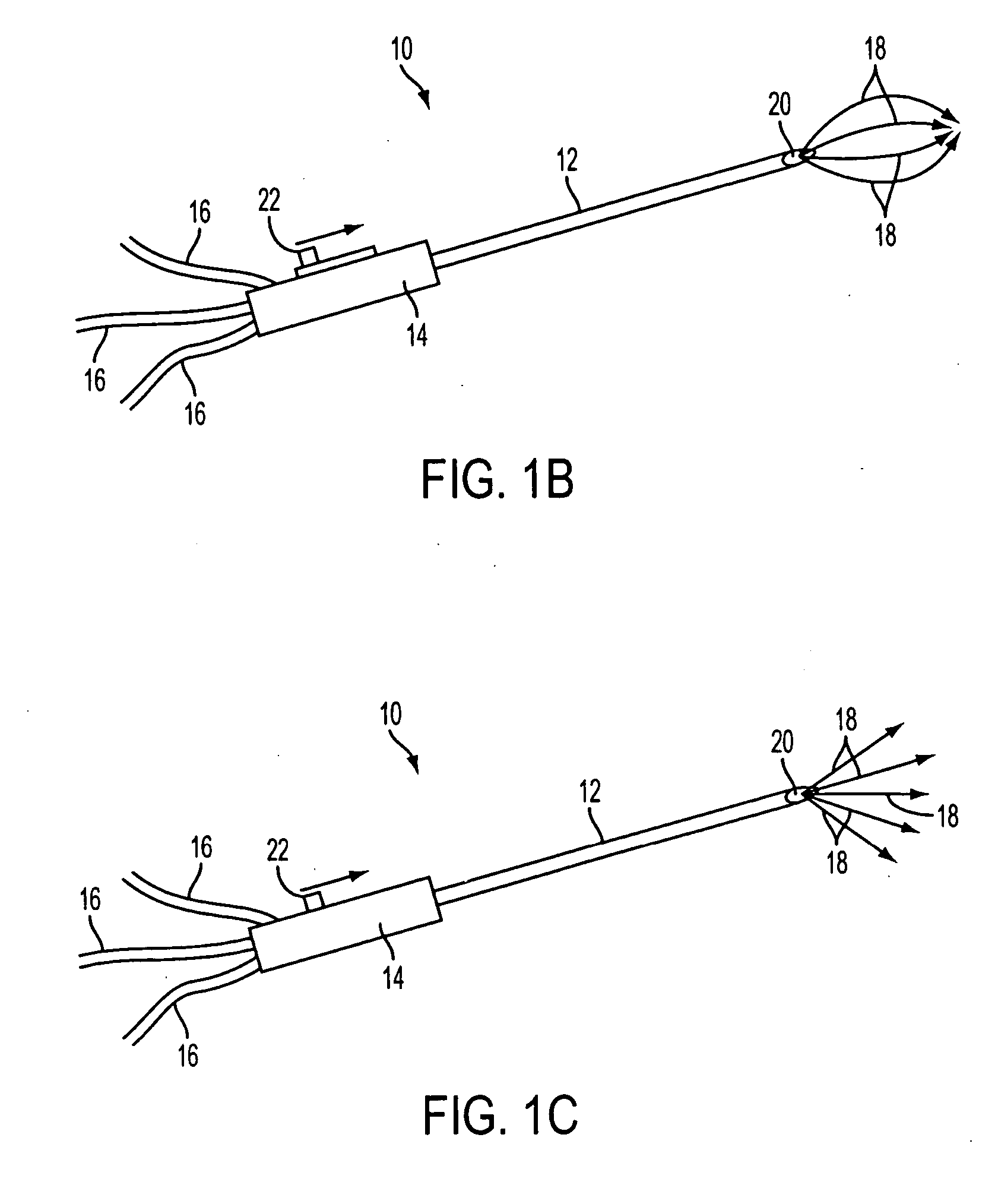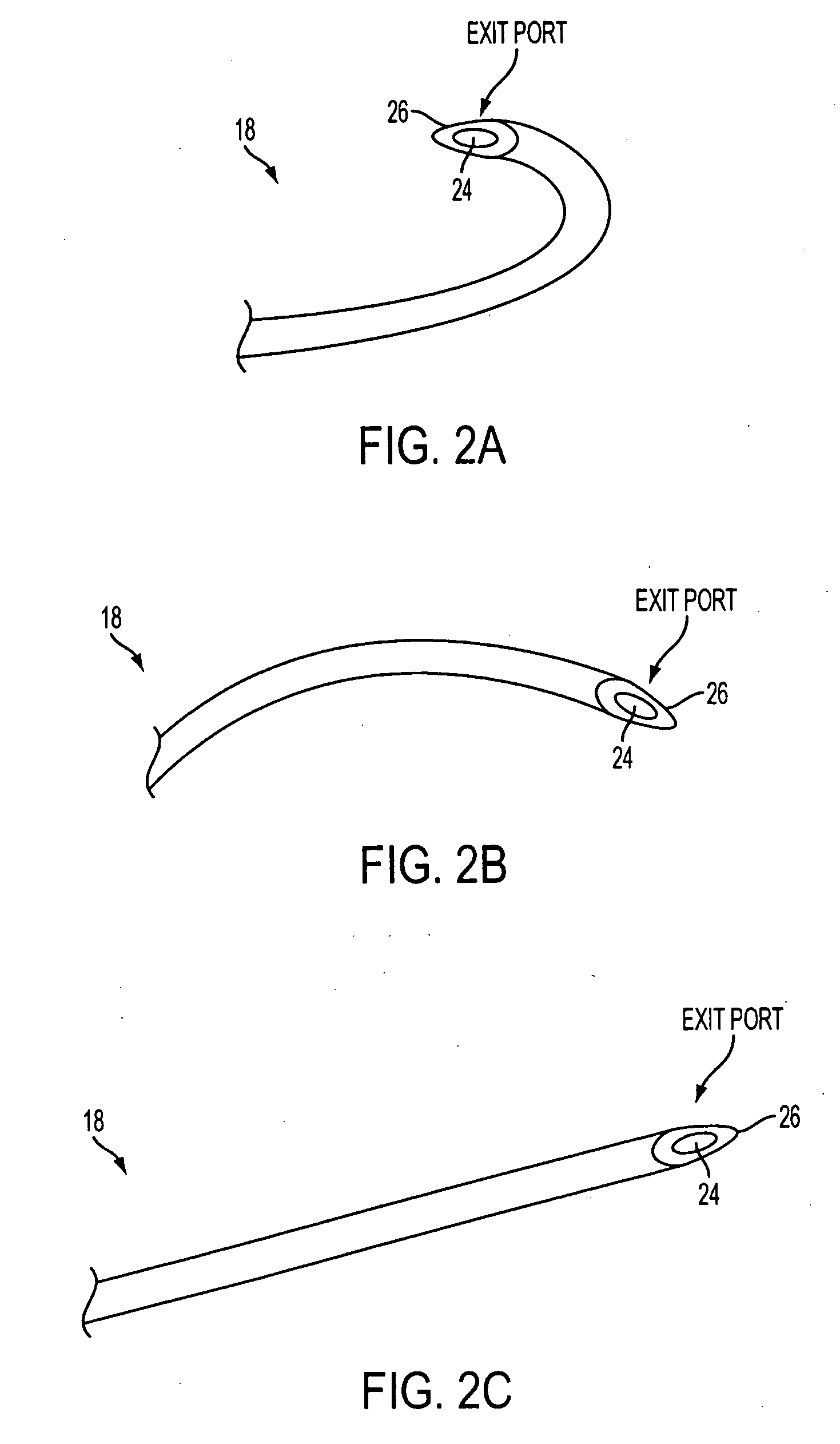Apparatus and method for pre-conditioning/fixation and treatment of disease with heat activation/release with thermoactivated drugs and gene products
a technology of preconditioning/fixation and gene products, which is applied in the direction of biocide, therapy, genetic material ingredients, etc., can solve the problems of ineffective cold spots in the treatment zone, limited treatment area, and limited focus of the previous use of these treatments, so as to achieve precise treatment of diseased tissue
- Summary
- Abstract
- Description
- Claims
- Application Information
AI Technical Summary
Benefits of technology
Problems solved by technology
Method used
Image
Examples
Embodiment Construction
[0042] The present invention is directed to a device and a method for thermally treating tissue not only to the limited small focal zone generally well known as the effective therapeutic zone, but also used to expand this zone and boundary conditions by use of heat as a precondition, conditioning and a fixation method controllable to that of a desired targeted treatment area. This defined targeted treatment area, thus, enables the release and / or activation of thermoactivated drugs and genes for the treatment of both cancerous, precancerous, benign lesions as well as infectious diseases. Furthermore, according to this invention, this is a method of using heat to fixate the thermoactivated drugs, genes, and / or viral vector to the targeted tissue to be treated.
[0043] The present invention relates to an apparatus and method for administering focused energy to a body using one or more energy applicator, such as Radio Frequency Ablation (RFA), Microwave Ablation (MA), Laser Ablation (LA)...
PUM
| Property | Measurement | Unit |
|---|---|---|
| Temperature | aaaaa | aaaaa |
| Length | aaaaa | aaaaa |
| Size | aaaaa | aaaaa |
Abstract
Description
Claims
Application Information
 Login to View More
Login to View More - R&D
- Intellectual Property
- Life Sciences
- Materials
- Tech Scout
- Unparalleled Data Quality
- Higher Quality Content
- 60% Fewer Hallucinations
Browse by: Latest US Patents, China's latest patents, Technical Efficacy Thesaurus, Application Domain, Technology Topic, Popular Technical Reports.
© 2025 PatSnap. All rights reserved.Legal|Privacy policy|Modern Slavery Act Transparency Statement|Sitemap|About US| Contact US: help@patsnap.com



